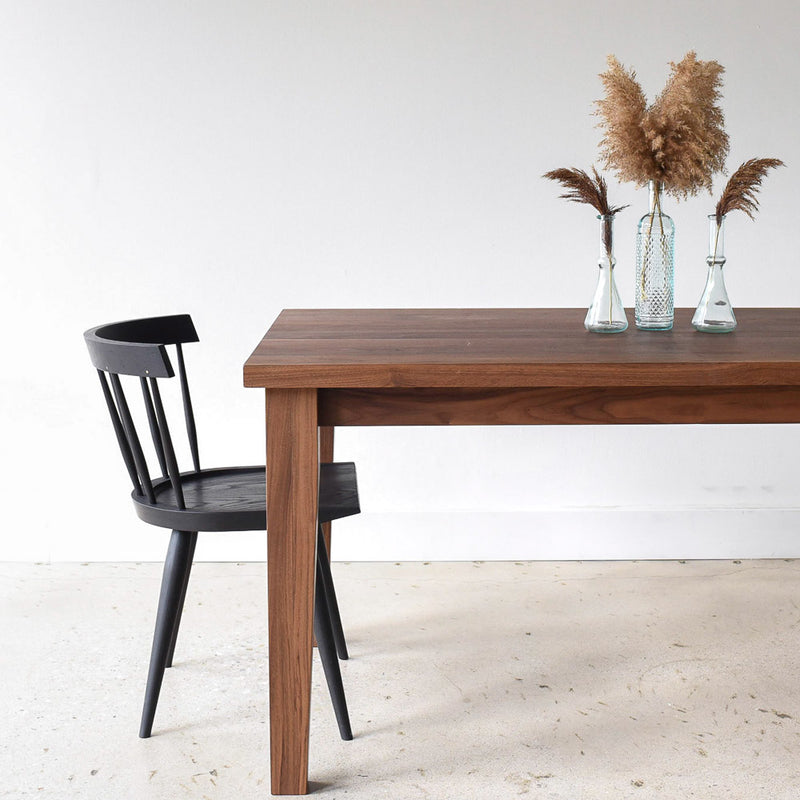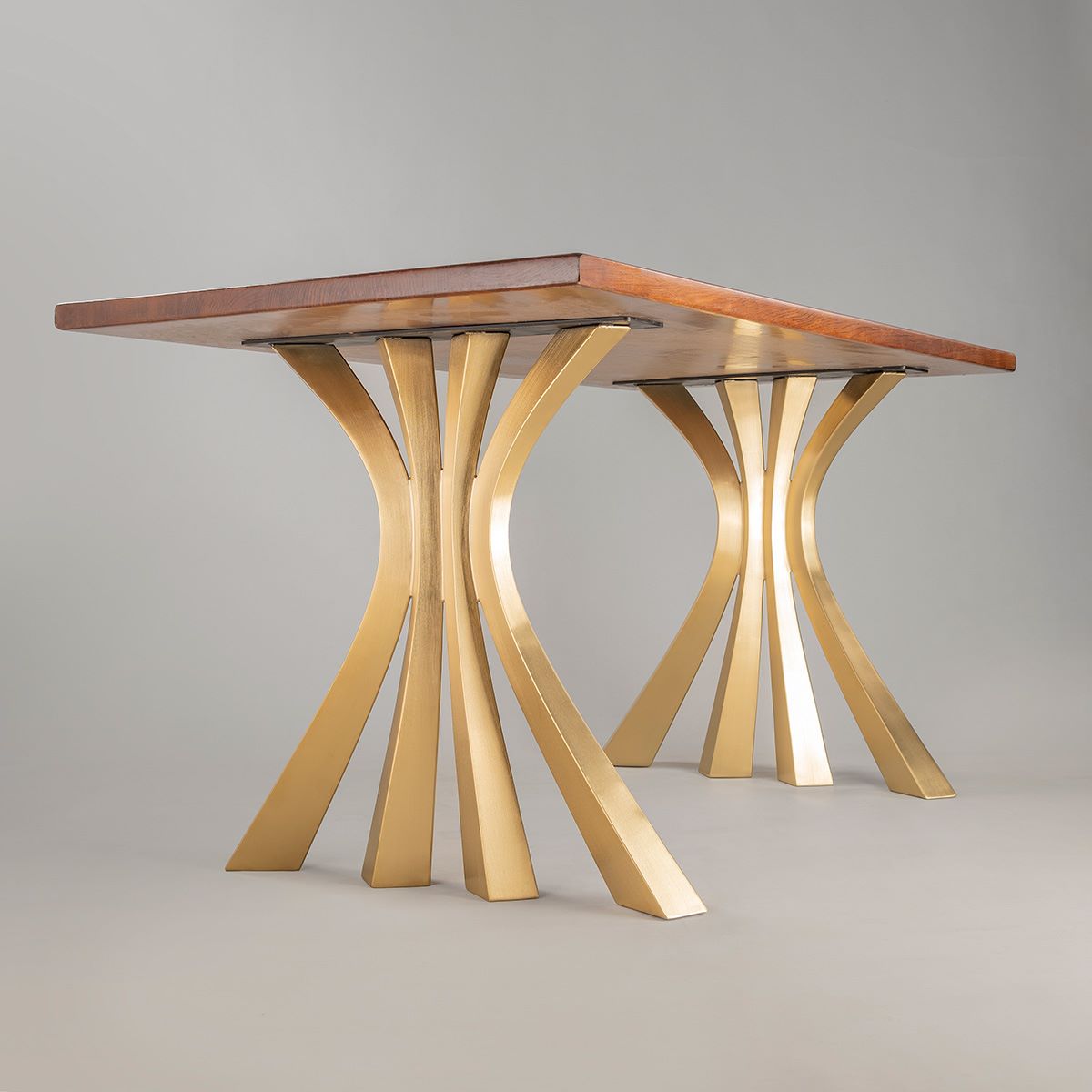Upgrade Your Table's Appearance with Ornamental Dining Table Legs Wood Designs
Important Considerations for Selecting the Right Eating Table Legs Wood
Picking the appropriate timber for dining table legs entails a nuanced understanding of numerous variables that affect both performance and aesthetic appeal. The choice of timber kind, ranging from robust woods to extra delicate softwoods, plays an essential duty in ensuring sturdiness and stability. Each of these components can considerably influence the overall experience of your dining area.
Value of Timber Kind

Hardwoods, such as maple, walnut, and oak, are typically favored for their toughness and resistance to use. These sorts of timber give a durable foundation that can withstand everyday usage, making them excellent for eating tables that experience frequent events. In contrast, softer woods like pine may be much more vulnerable to scrapes and dents, which might not be ideal for high-traffic areas.
Additionally, the option of wood can also affect the ease of upkeep. Some timbers require normal oiling or securing to preserve their look, while others might be more flexible. Eventually, selecting the proper wood type includes stabilizing aesthetic factors to consider with functional demands, making sure that the dining table legs not only look enticing yet additionally stand the examination of time.
Examining Security and Strength
When assessing table legs, one must take into consideration the stability and toughness they provide to the general structure. The legs are critical in sustaining the table top and guaranteeing the eating experience is safe and enjoyable. A secure table is important for stopping wobbling or tipping, which can result in spills or accidents throughout dishes.
The choice of wood type significantly impacts stamina. Hardwoods such as oak, maple, and walnut are typically more durable and long lasting than softwoods like want or fir. Furthermore, the thickness and design of the legs play a vital role; thicker legs or those with a tapered design can supply better assistance and security.

Visual Factors To Consider
While functionality is vital, the aesthetic appeal of eating table legs can not be neglected, as they substantially affect the general layout and atmosphere of the eating space. The choice of coating, wood, and layout can detract or boost from the table's aesthetic influence.

Coatings also play an important duty in aesthetic appeals. A natural finish can highlight the wood's intrinsic elegance, while repainted or tarnished legs can introduce shade and personality right into the area. The percentage and scale of the legs family member to the table top and bordering furnishings needs to be thought about to make certain visual balance and cohesion.
Inevitably, the table legs should not only offer a functional objective however likewise contribute to a natural and welcoming atmosphere, making them an important factor to consider in the general design of the dining location.
Upkeep Requirements
To make certain durability and protect the beauty of wooden eating table legs, regular maintenance is essential (Dining Table Legs Wood). Timber is a natural material that can be vulnerable to harm from dampness, warm, and use. As a result, developing a regular treatment plan will substantially boost the longevity of your dining table legs.
Begin with routine cleaning using a soft, lint-free towel to eliminate dust and particles that can damage the surface. For more detailed cleaning, use a light soap service and damp cloth, preventing excess moisture that could permeate into the timber. It is recommended to apply a high-grade timber polish or conditioner every few months to nurture the wood and preserve its luster.
Additionally, consider the setting where the table is placed. Stay clear of straight sunlight, as it can cause fading, and use placemats or rollercoasters to protect the surface area from warm and moisture. Address any type of scratches or damages immediately with appropriate timber filler or touch-up pens to avoid further degeneration. By sticking to these upkeep requirements, you will not only protect the visual charm of your wooden table legs yet also expand their functional lifespan.
Budget Plan and Expense Factors
Budget plan and cost aspects regularly play an important role in the decision-making process for choosing wood dining table legs. When evaluating options, it is important to establish a clear spending plan that lines up with your overall furnishings investment. The cost of wood table legs can differ dramatically based upon the type of layout, article timber, and workmanship complexity.
Woods such as oak, walnut, and cherry generally command higher prices due to their longevity and visual allure. In comparison, softer timbers like yearn may be more budget-friendly yet could not use the exact same check here long life. Furthermore, personalized or artisan-crafted legs can incur added costs, reflecting the skill and time bought their creation.
It is also crucial to consider the prospective long-lasting value of your investment. While deciding for lower-cost materials may seem economically prudent at first, they might need even more constant replacement or repairs, ultimately raising total expenditure.
As a result, stabilizing quality and expense is necessary. Prioritize materials that fulfill your aesthetic preferences while ensuring they fit easily within your budget plan, enabling you to produce a dining location that is both aesthetically attractive and functional.
Final Thought
To conclude, picking the proper timber for dining table legs necessitates cautious factor to consider of various elements, including timber type, stability, aesthetic appeals, upkeep, and budget. Hardwoods such as oak and walnut supply exceptional longevity and stamina, while layout and density add to total security. Visual allure and maintenance needs have to line up with private preferences and way of living. Ultimately, an educated decision will certainly improve the durability and visual allure of the table, guaranteeing complete satisfaction and functionality for several years ahead.
Choosing the best type of timber for eating table legs is crucial for both visual appeal and architectural stability. Ultimately, choosing the proper timber type involves like this balancing aesthetic considerations with functional requirements, making certain that the eating table legs not only look enticing but also stand the test of time.
It is a good idea to apply a high-quality wood gloss or conditioner every couple of months to nourish the timber and keep its gloss.
The price of wooden dining table legs can differ dramatically based on the type of craftsmanship, layout, and wood complexity.
In conclusion, picking the appropriate wood for eating table legs necessitates cautious factor to consider of various variables, consisting of timber kind, stability, aesthetics, upkeep, and budget.